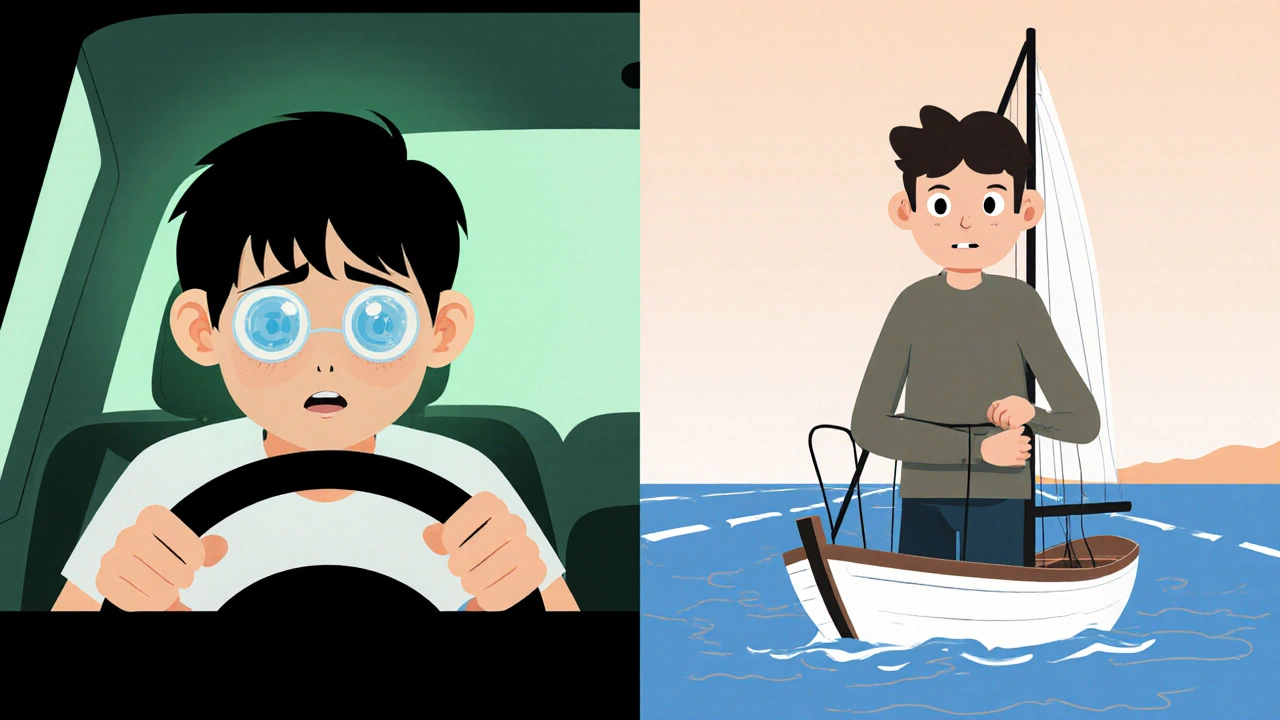
Motion Sickness vs Seasickness: How They're Linked and How to Beat Them
Explore how motion sickness and seasickness share the same inner‑ear causes, why some people suffer more, and the best prevention and treatment tips.
When your eyes say you’re still, but your inner ear says you’re moving, your brain gets confused—and that’s when motion sickness, a common condition triggered by conflicting signals between the eyes, inner ear, and body. Also known as travel sickness, it’s not weakness or anxiety—it’s a hardwired biological glitch that affects up to one in three people. Whether you’re on a boat, in a car, or even playing a VR game, your brain doesn’t know what to believe. The result? Sweating, dizziness, and that awful feeling like you’re going to throw up.
This isn’t just about cars and boats. vertigo, a sensation of spinning or tilting even when still often shows up alongside motion sickness, especially if you’ve had inner ear issues before. And while some people think it’s just a nuisance, it can wreck a vacation, delay recovery after surgery, or make daily commutes unbearable. The good news? You don’t have to just suffer through it. There are proven ways to manage it—some natural, some medical. And yes, there’s a difference between taking an over-the-counter pill and actually training your body to adapt.
What works for one person might do nothing for another. Some swear by ginger chews. Others need a patch behind the ear. A few find that focusing on the horizon helps. But if you’ve tried all that and still feel sick, it might be time to look at the meds. anti-nausea medication, drugs designed to block the signals that trigger vomiting in the brain exist for a reason. They’re not just for hospitals—they’re used by pilots, sailors, and even people who get sick on roller coasters. And while most are safe, they’re not all the same. Some make you sleepy. Others don’t work unless you take them hours before you move.
Here’s the thing: motion sickness doesn’t just happen randomly. It’s tied to how your body processes movement, how much sleep you got, what you ate, and even the air quality in the car or plane. That’s why the same person might feel fine on a cruise but sick on a bus. It’s not the motion itself—it’s the mismatch between what your senses are telling you. And that’s why quick fixes often fail. You need a strategy, not just a pill.
Below, you’ll find real guides from people who’ve dealt with this—whether it’s how to use medication safely, what alternatives actually help, or how to avoid triggers without giving up travel. No fluff. No vague advice. Just clear, practical info that works.

Explore how motion sickness and seasickness share the same inner‑ear causes, why some people suffer more, and the best prevention and treatment tips.